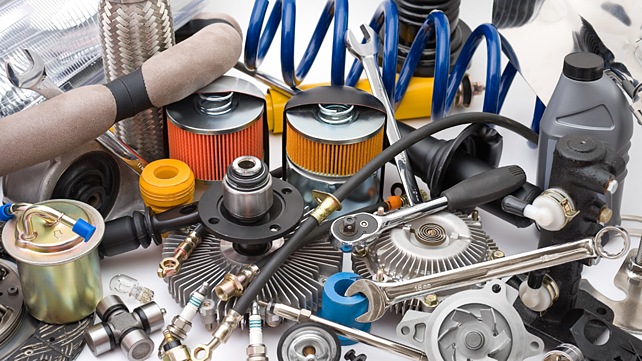
The domestic auto component industry has witnessed smart recovery during the quarter ending June 2021 driven by strong exports and revival of domestic demand in June 2021, according to research and rating agency ICRA.
In its sample of 50 auto component suppliers, ICRA witnessed a strong revenue growth of 140% YoY, albeit on a low base of Q1 FY21. Despite the COVID 2.0 restrictions, the overall decline in Q1 FY22 was restricted to 19% on QoQ basis, in contrast to ICRA’s earlier estimate of QoQ decline of 30-35%.
The revenue decline for aftermarket-dependent components like tyres and batteries was capped at 13%, as against a steeper 19% decline for the broader sample. Most domestic automobile sub-segments, especially passenger vehicle (PV) and tractors continue to witness strong demand and are almost at pre-COVID levels. The M&HCV segment, which was impacted during Q1 FY22, is also now showing signs of recovery, the agency reported.
Promising forecast for FY22
ICRA expects the PV, 2W and CV segments to report healthy double-digit growth in FY22.
Commenting on the near to medium term trends, Ashish Modani, Sector Head and Vice President – Corporate Ratings, ICRA said the agency expects the industry to witness 20-23% revenue growth during FY22, supported by recovery in the domestic automobile industry and robust exports.
“The pass-through increase in commodity prices will also add to the revenue growth. The industry gross margins improved sequentially in Q1 FY22, but remain lower than the historical trend. The shortage of semi-conductor and increase in commodity prices remain key challenges for the industry in the near-term,” he added.
Supply side concerns
One of the concerns for the industry is the price of key commodities, which continues to remain at an elevated level, despite some moderation in recent months.
Auto component suppliers usually pass on the impact of commodity price increases to OEMs with a lag of one or two quarters. Recent trends also suggest that suppliers have gradually passed on the hike in commodity prices to their customers, as reflected in the sequential improvement in gross margins.
The gross margin, however, remains lower than the normal levels (which were prevalent in FY20) by 100 bps. Further, given the average inventory holding period of 30-45 days, some companies would have also had the benefit of lower priced inventory.
The shortage of semi-conductors remains another key concern for the industry. ICRA said the automotive industry accounts for 11% of global semi-conductor demand. Stronger-than-expected recovery along with supply disruption at some semiconductor manufacturing facilities, has aggravated chip shortage issues globally, the agency noted.
The automobile supply chain is long and complex, with OEMs and Tier I suppliers relying on just-in-time inventory management practices. It takes about six months from chip production to car production, with several tiers of suppliers in between, which has resulted in this global demand-supply mismatch, ICRA explained.
Many PV makers in India have acknowledged the impact on production volume due to semi-conductor shortage, with volume loss of 100,000 units in Q2 FY22 itself – about 3% of annual production!
The supply bottleneck poses a major challenge to the industry with waiting period for few models/variants exceeding four months, though underlying demand remains strong. ICRA’s interaction with industry participants indicates that supply shortage is likely to continue at least till the end of CY21, which will remain an overhang on industry’s revenue growth prospects.
In comparison to mature markets, the challenges faced by OEMs in India have been relatively limited due to lower semi-conductor-based components, given the sales mix being skewed in favour of Class A & B cars. In addition, OEMs have been trying to develop alternate sources, airlift material and pursue other innovative solutions to overcome the semiconductor supply issue, said ICRA.
Financial performance
While most auto component suppliers witnessed sequential decline in operating margin due to impact of COVID 2.0 on overall revenues, over 85% entities in ICRA’s sample witnessed QoQ reduction in raw material cost proportion during Q1 FY22, which partially supported profit margins.
A few suppliers registered QoQ improvement in revenue, supported by healthy exports and improved demand in the key end user industries.
Vinutaa S, Assistant Vice President & Sector Head – Corporate Ratings, ICRA said the agency expects industry’s margin (non-tyre sample) to improve by 100-125 bps to 13% ± 25 bps during Q2 FY22.
The industry’s coverage indicators continue to remain comfortable. The disruption in working capital cycle due to second wave of the pandemic resulted in somewhat higher reliance of short-term debt, and hence increase in interest expenses in Q1 FY22. Moreover, increase in commodity prices and stocking up of inventory to avoid any further supply shock has also necessitated relatively higher level of working capital as compared to the earlier level.
Despite increase in interest expense and impact on operating profits, overall interest cover continues to remain comfortable for most suppliers at 11 times in Q1 FY22 against 10.7 times in FY21. It is expected that the overall credit metrics such as TD/OPBDIT for the sector will remain comfortable below 1.5 times in FY22e aided by healthy accruals and modest capex plans, said ICRA.